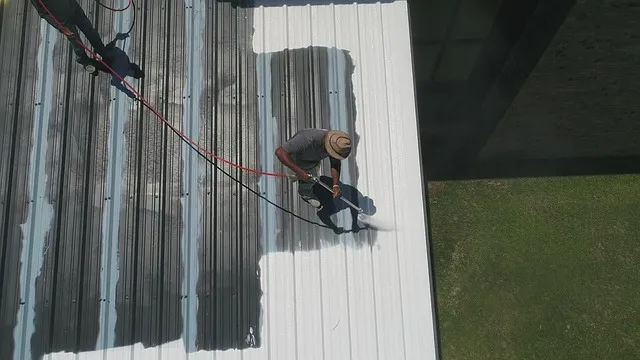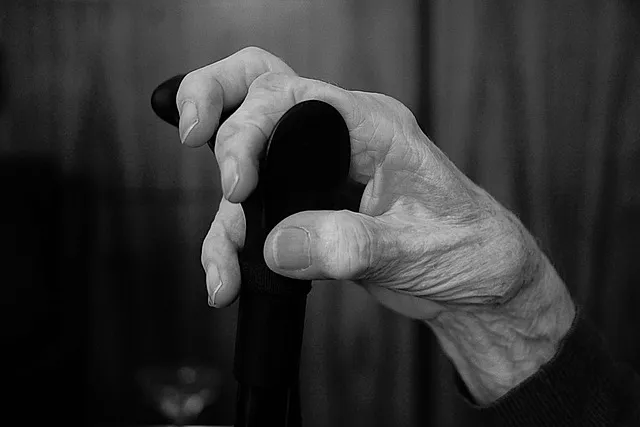Regular commercial roof checkups are essential for preventative maintenance, identifying potential issues early to avoid costly repairs or structural damage. These inspections, conducted by professionals, focus on weather damage, wear and tear, drainage systems, and structural integrity. Preventative care practices like cleaning and protective coatings extend the life of commercial roofs, enhance energy efficiency, and improve building performance. Structured inspection plans and regular cleaning tasks ensure early detection of problems, preventing minor issues from becoming major repairs, thus fostering a safe work environment. Regular maintenance is a strategic investment that saves costs and extends roof lifespan.
Regular commercial roof checkups and preventative maintenance programs are essential components of building asset management. In today’s competitive market, prolonging the lifespan of your commercial roof not only saves significant costs but also ensures operational continuity. This article delves into the critical importance of routine inspections, key components of comprehensive maintenance programs, and the manifold benefits of preventative maintenance for commercial roofs. We also offer practical strategies to incorporate regular roof examinations into your schedule and discuss common issues identified during these checkups, providing cost-effective solutions for optimal roof health.
- Understanding the Importance of Regular Commercial Roof Checkups
- Key Components of a Comprehensive Maintenance Program
- Benefits of Preventative Maintenance for Commercial Roofs
- Strategies to Incorporate Regular Roof Inspections into Your Schedule
- Common Issues Identified During Commercial Roof Checkups
- Cost-Effective Solutions for Maintaining Optimal Roof Health
Understanding the Importance of Regular Commercial Roof Checkups

Regular commercial roof checkups are an essential component of any preventative maintenance program. They serve as a proactive measure to ensure the longevity and optimal performance of your building’s roofing system. By scheduling routine inspections, business owners can identify potential issues early on, long before they escalate into costly repairs or even structural damage. This is particularly crucial for commercial properties, which often bear the brunt of environmental factors like extreme weather conditions, pollution, and heavy traffic.
A well-maintained roof not only extends its lifespan but also provides energy efficiency benefits. Regular cleaning and inspection plans can help remove debris buildup, prevent water penetration, and ensure proper drainage. These measures contribute to reducing energy consumption and enhancing indoor comfort by minimizing heat transfer through the roof. In addition, preventative roof care helps maintain the overall aesthetics of the property, ensuring a professional image for your business.
Key Components of a Comprehensive Maintenance Program

A comprehensive commercial roof maintenance program involves several key components that work together to ensure the longevity and optimal performance of your roofing system. The first step is establishing a detailed roof inspection plan. Regular, thorough inspections by trained professionals are crucial for identifying potential issues early on, long before they escalate into costly repairs. These assessments should encompass checking for damage from weather events, signs of wear and tear, proper drainage systems, and the overall integrity of the roof structure.
Additionally, incorporating preventative roof care practices into your maintenance routine is essential. This includes regular cleaning to remove debris and dirt that can block gutters and drains, as well as applying protective coatings or seals to shield the roof from environmental elements. By integrating these measures into a consistent roof cleaning and maintenance schedule, business owners can significantly extend the life of their commercial roofs while minimizing unexpected breakdowns.
Benefits of Preventative Maintenance for Commercial Roofs

Regular commercial roof checkups and preventative maintenance programs are essential for preserving the integrity and longevity of your building’s most vital protection against the elements. While many property managers tend to focus on immediate repairs, a proactive approach to commercial roof maintenance offers significant long-term benefits. By implementing structured roof inspection plans and adopting preventative roof care practices, businesses can mitigate costly unexpected repairs, enhance energy efficiency, and improve overall building performance.
These programs involve routine assessments that identify subtle signs of wear and tear, including leaks, missing shingles, or damaged flashing. Early detection allows for timely repairs, preventing small issues from escalating into major problems. Moreover, regular cleaning and maintenance tasks, such as removing debris and algae buildup, contribute to extending the roof’s lifespan, enhancing its ability to withstand harsh weather conditions, and ensuring optimal drainage systems. This proactive approach ultimately saves businesses money, reduces downtime associated with unexpected roof failures, and fosters a safe and stable work environment.
Strategies to Incorporate Regular Roof Inspections into Your Schedule

Incorporating regular commercial roof inspections into your routine is a proactive step towards ensuring the longevity and integrity of your property’s roofing system. The first strategy involves establishing a comprehensive roof inspection plan tailored to your building’s specific needs. This plan should include frequent visual examinations, ideally conducted by qualified professionals, to identify even the smallest signs of damage or wear and tear. By setting a consistent schedule—monthly, quarterly, or annually, depending on factors like local climate and roof type—you can catch potential issues early, preventing minor problems from escalating into costly repairs.
Additionally, implementing preventative roof care practices between inspections is vital. This includes regular cleaning to remove debris and contaminants that might block gutters or compromise the roof’s protective layers. Routine maintenance also involves checking for loose or damaged shingles, sealing cracks, and ensuring proper ventilation. Engaging in these simple yet effective measures significantly contributes to extending the lifespan of your commercial roof, saving you from unexpected breakdowns and promoting the overall efficiency of your building’s most critical protection system.
Common Issues Identified During Commercial Roof Checkups

Commercial roof checkups often reveal a range of common issues that can be addressed through proactive preventative maintenance programs. During routine inspections, professionals look for signs of damage such as missing or damaged shingles, leaks, and blisters in the roofing material. These problems can be caused by various factors including extreme weather conditions, poor installation, or lack of proper ventilation.
Regular roof cleaning is another critical aspect of commercial roof maintenance. Accumulated dirt, debris, and even algae can compromise the effectiveness of the roofing system’s protective layers. Implementing structured roof inspection plans that include both visual assessments and advanced scanning technologies helps identify these issues early on, enabling timely repairs before they escalate. Preventative roof care not only extends the lifespan of commercial roofs but also reduces costly emergency repairs and business disruptions.
Cost-Effective Solutions for Maintaining Optimal Roof Health

Regular commercial roof checkups are an investment that pays dividends in terms of cost-effectiveness and roof longevity. By implementing preventative maintenance programs, businesses can significantly reduce the risk of costly repairs and replacement. A well-maintained roof not only enhances the structural integrity of a building but also contributes to energy efficiency and safety.
One of the most effective strategies for commercial roof maintenance is establishing comprehensive inspection plans. These plans should include routine roof inspections, careful monitoring of any signs of damage or wear, and prompt addressing of issues. Preventative roof care involves regular cleaning to remove debris and moisture buildup, which can lead to rot or mold. Additionally, re-sealing and repairing small cracks or leaks early on prevents them from becoming larger, more expensive problems.
